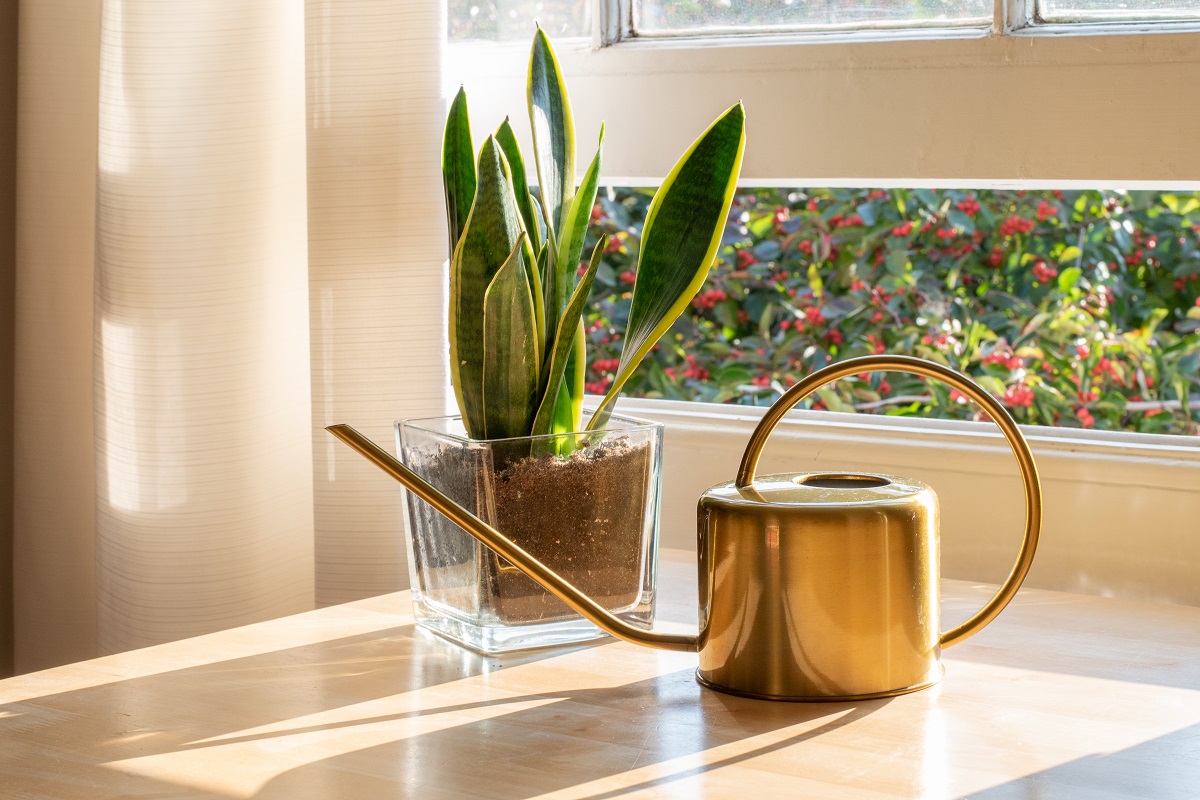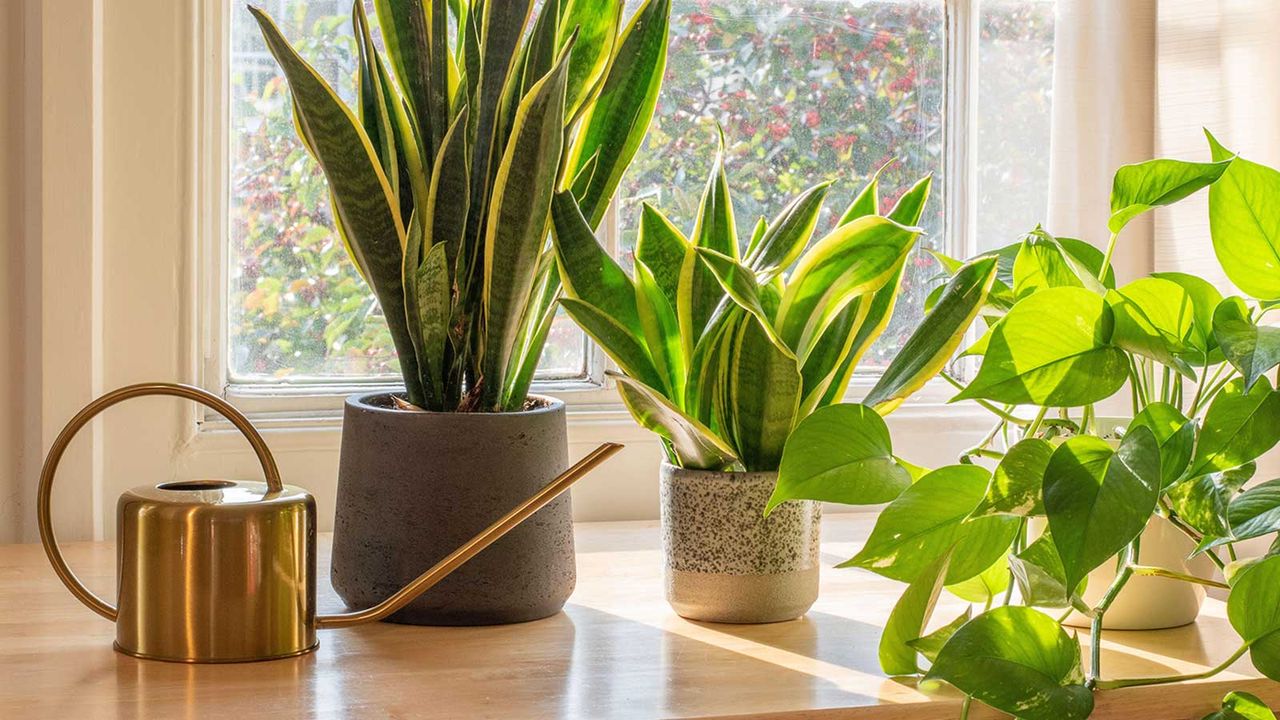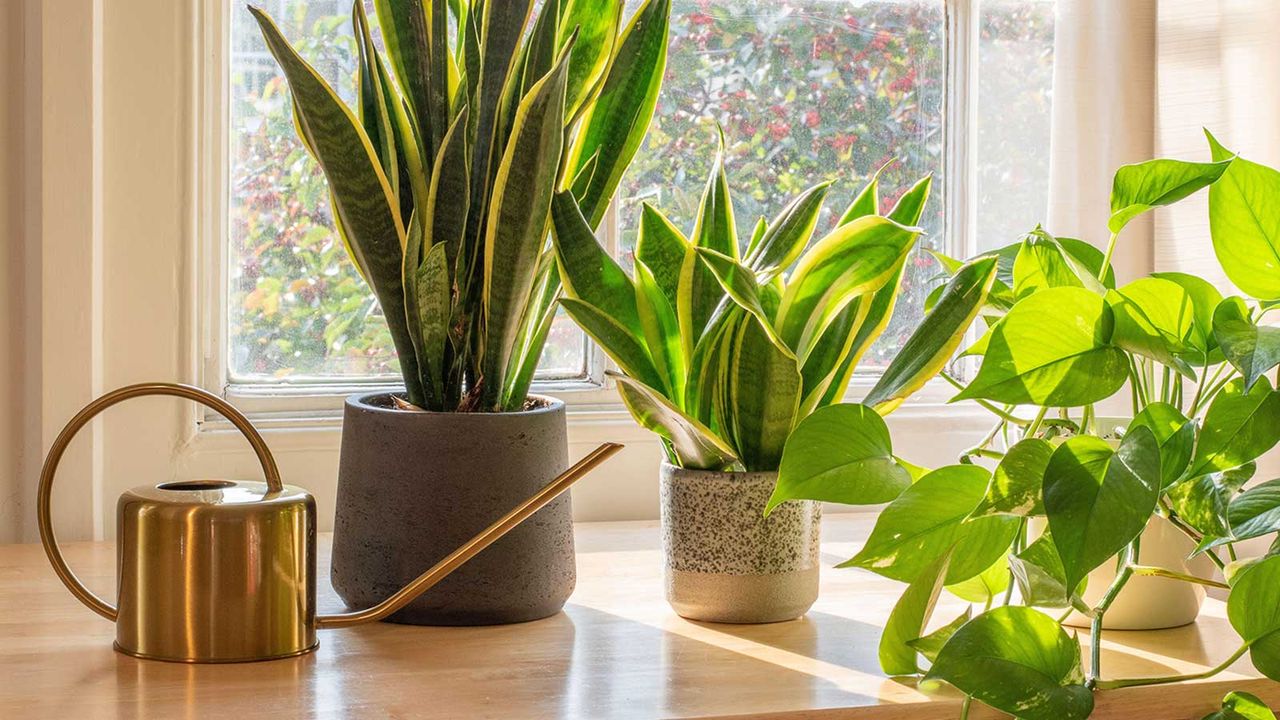How Often to Water Snake Plants in the Winter Months is a common question among plant enthusiasts, especially during the colder months when the plant’s water needs shift significantly. Snake plants, known for their resilience, require a different watering schedule in winter compared to their summer counterparts.
This is due to the lower temperatures and reduced sunlight that impact the plant’s growth rate and water absorption.
Understanding the nuances of snake plant watering in winter is crucial for maintaining its health and vibrancy. This guide delves into the key factors influencing watering frequency, provides practical tips for identifying signs of overwatering and underwatering, and offers a comprehensive winter care routine for your beloved snake plant.
Snake Plant Watering Basics in Winter

Winter brings colder temperatures, which directly impact how often you should water your snake plant. Understanding these changes is crucial for keeping your plant healthy during the colder months.
Identifying When a Snake Plant Needs Watering in Winter
To determine when your snake plant needs watering, you need to understand how the plant’s water needs change in winter. The key is to feel the soil moisture. Here’s how to assess the soil:* Stick your finger about two inches deep into the soil.If the soil feels dry, it’s time to water.
If the soil feels moist, wait a few more days before watering.
Watering Frequency in Winter
Generally, snake plants require less frequent watering during winter. Here are some guidelines for watering your snake plant during winter:* Water every 2-4 weeks.This is a general guideline, and the actual frequency may vary depending on factors such as the size of the pot, the type of soil, and the temperature in your home.
- Avoid overwatering.Overwatering is a common problem during winter, as the soil takes longer to dry out. Signs of overwatering include yellowing leaves and a mushy feel to the soil.
- Let the soil dry out completely between waterings.This helps prevent root rot and keeps your snake plant healthy.
- Use lukewarm water.Cold water can shock the plant’s roots.
- Water thoroughly.When you do water, make sure to soak the soil completely.
Factors Affecting Watering Frequency
The watering frequency of your snake plant in winter is not a one-size-fits-all approach. Several factors influence how often you need to water your plant. These factors can significantly affect the moisture levels in the soil and the plant’s overall hydration.
While snake plants are known for their drought tolerance, their watering needs can shift during the winter months. Just like in low-humidity environments, where you may need to water more frequently to compensate for moisture loss, the cooler, drier air of winter can also lead to faster dehydration.
Refer to our guide on How Often to Water Snake Plants in Low-Humidity Environments for helpful tips on adjusting your watering schedule based on your environment. By understanding these factors, you can ensure your snake plant stays healthy and vibrant even during the winter months.
Humidity Levels in Winter
Humidity levels play a significant role in how often you need to water your snake plant in winter. Winter months tend to be drier, especially in indoor environments with central heating. The dry air can cause the soil to dry out faster, requiring more frequent watering.
Pot Size and Soil Type, How Often to Water Snake Plants in the Winter Months
The size of the pot and the type of soil used can affect the water retention capacity of the soil. Smaller pots tend to dry out faster than larger pots. Similarly, well-draining soil will dry out quicker than denser soil.
Snake Plant Varieties
Different snake plant varieties have slightly different watering needs. Some varieties, like the ‘Laurentii’ with its wider leaves, might need slightly more water than others, like the ‘Sansevieria cylindrica’ with its cylindrical leaves.
Signs of Overwatering and Underwatering

Determining whether your snake plant needs more or less water can be challenging, especially during the winter months. However, understanding the visual cues your snake plant displays can help you make informed watering decisions. These cues, whether indicative of overwatering or underwatering, are crucial for maintaining the health and vitality of your plant.
Visual Cues of Overwatering and Underwatering
Understanding the visual cues associated with overwatering and underwatering is crucial for providing the right amount of water to your snake plant during winter. These visual cues can help you diagnose the problem and adjust your watering schedule accordingly.
Overwatering |
Underwatering |
|---|---|
Yellowing or browning of the leaves, often starting at the base and progressing upwards. |
Wilting leaves, which may become limp or droop. |
Soft, mushy leaves, which may feel spongy to the touch. |
Leaves that feel dry and brittle to the touch. |
A foul odor emanating from the soil, indicating rotting roots. |
Dry, cracked soil that is difficult to penetrate with your finger. |
Leaf drop, which may be a sign of severe overwatering. |
Slow growth or stunted growth, as the plant struggles to access water. |
Watering Techniques for Winter: How Often To Water Snake Plants In The Winter Months
Winter brings colder temperatures and less sunlight, which can significantly affect the watering needs of snake plants. During this season, it’s crucial to adjust your watering routine to ensure your plant remains healthy and thriving.
Just like snake plants need careful watering in the winter months, outdoor bonsai trees require a pot that complements their needs. Selecting the right bonsai pot is crucial, and factors like material, size, and drainage are essential for the tree’s health.
How to Select the Perfect Bonsai Pot for Outdoor Trees provides a comprehensive guide to choosing the ideal pot for your bonsai. Similar to bonsai trees, snake plants prefer pots with proper drainage to prevent root rot, especially during the winter when watering frequency should be reduced.
Watering Methods for Winter
The key to watering snake plants in winter is to use a method that allows for controlled and targeted watering. One of the most effective methods is to use a watering can with a long spout. This allows you to pour water directly onto the soil, minimizing the risk of overwatering the plant.
- Watering Can with a Long Spout:This allows you to precisely target the soil without getting water on the leaves. It minimizes the risk of overwatering and helps prevent leaf rot.
- Bottom Watering:This method involves placing the pot in a tray filled with water and allowing the plant to absorb moisture from the bottom up. It’s particularly useful for winter as it provides a slow and controlled release of water.
Checking Soil Moisture Levels
Before watering your snake plant, it’s crucial to check the soil moisture levels. This ensures that you’re not watering the plant too often, which can lead to overwatering and root rot.
- Finger Test:Insert your finger about an inch into the soil. If it feels dry, the plant needs water. If it feels slightly moist, wait a few more days before watering.
- Wooden Skewer Test:Insert a wooden skewer into the soil. If it comes out dry, the plant needs water. If it comes out moist, wait a few more days before watering.
“The goal is to allow the top inch or two of soil to dry out completely between waterings.”
Concluding Remarks

By understanding the unique needs of snake plants in winter, you can provide the optimal care for their well-being. Remember, proper watering is the foundation for a thriving snake plant, even during the colder months. By following the tips and guidelines Artikeld in this guide, you can ensure your snake plant remains healthy, vibrant, and a beautiful addition to your home throughout the winter season.
FAQ Summary
How often should I water my snake plant in the winter if it’s near a window?
Snake plants near windows may require slightly more frequent watering due to the increased light exposure. However, always check the soil moisture before watering, as direct sunlight can also dry out the soil faster.
Can I use tap water to water my snake plant in winter?
It’s best to use filtered or distilled water for your snake plant, especially in winter. Tap water can contain minerals that may build up in the soil and harm the plant.
What are the best signs to look for when deciding to water my snake plant in winter?
The best indicators are the soil moisture level, the plant’s leaves, and the overall appearance. Check for dry soil, slightly drooping leaves, and a lack of new growth.
Should I fertilize my snake plant during winter?
It’s generally recommended to hold off on fertilizing snake plants during winter as their growth slows down. You can resume fertilizing in spring when the plant resumes active growth.
